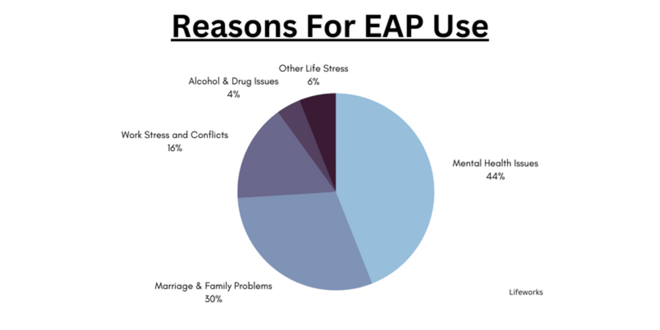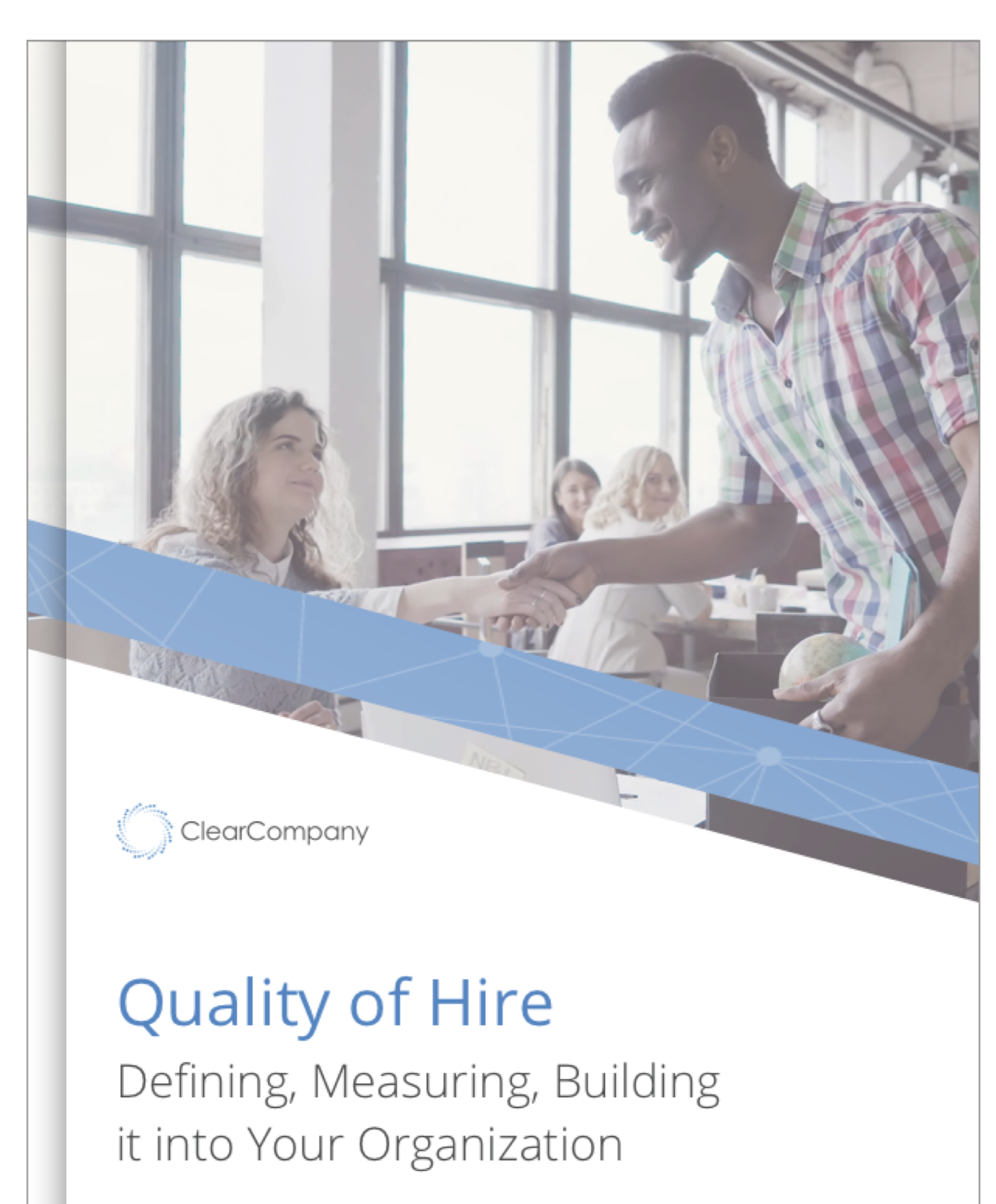It’s not surprising that a global pandemic and the subsequent challenges we’ve all faced have taken a toll on mental health for many. 84% of employees say they’ve experienced a mental health challenge over the past year, and 31% say their mental health has worsened. Luckily, 93% of companies say they’re making mental health care for employees a priority and expect to over the next three years.
One way employers can support mental well-being is with a mental health EAP (employee assistance program). An EAP is designed to provide employees with a confidential space to manage any personal or workplace issues affecting their job satisfaction and performance.
But employee assistance programs are more than just a tick-box operation or performance management trend. An EAP is a powerful tool that changes the structure of the modern workplace by putting mental health first.
Did you know that 84% of employees have had a mental health challenge in the past year? Support #employeementalhealth with an #EmployeeAssistanceProgram:So, what exactly is a mental health EAP, and how do they work?
What is a Mental Health EAP?
An employee assistance program (EAP) is a service to help employees resolve any issues that negatively impact their job performance. A mental health EAP provides resources to help employees manage mental health conditions.
With an EAP in place, companies can provide employees with the guidance and resources they need to manage their stressful situations and positively impact their mental health. Some of the most utilized EAP services include:
-
Mental health counseling services
-
Legal advice
-
Domestic services
-
Career transitions
-
Professional development and ongoing training
-
Mental well-being modules
-
Grief counseling sessions
-
Fitness and nutrition services

How Do EAPs Work?
Because EAP services deal with such sensitive topics, they’re usually delivered via a third-party company to ensure confidentiality. The employer is responsible for sourcing and financing the services of an EAP. The program is free to employees, although an employee may have options to purchase additional extras. Employees’ family members can also typically access their EAP benefits.

There are three main models for EAP services:
In-House EAP
Some employers may choose to provide an in-house EAP program. Initiatives may include hiring an on-site therapist to occupy their huddle space or building a gym.
Due to the costs, an in-house EAP is usually implemented by large businesses.
Outsourced/Partnership EAP
A partnership EAP is a cost-effective way of providing supportive services. Businesses choose a third-party vendor to supply them with fixed services.
It is an excellent choice for small and medium businesses.
Hybrid EAP
The hybrid EAP model incorporates both in-house and outsourced EAP services.
Hybrid EAP might be a perfect choice for businesses that can afford to implement some of the more affordable in-house EAP services.
Contract/Per-Use EAP
In a contract model, companies partner with an external EAP vendor and only enlist their services when requested. It’s commonly used for counseling-based services.
While per-use models are more restrictive than the others, they’re designed to be as affordable as possible. For this reason, it’s a fantastic option for startups and new, small businesses.
Key Benefits of an Employee Assistant Program
Let’s take a deeper look at some of the advantages of an EAP.
Reduces Burnout and Increases Productivity
Lost productivity due to poor mental health has a global cost of approximately $1 trillion per year. This is hardly surprising when a massive 76% of employees admit to experiencing burnout at work at least sometimes.
Mental health EAP aims to resolve productivity issues by prioritizing mental health support and strengthening employee engagement. Ultimately, this redirects their focus to work activities with fewer intrusive distractions.

Promotes a Trusting, Mental Health Culture
A recent Breeze study found that 63% of employees have taken at least one day off due to mental health in the last year. However, 44% of these employees felt unable to tell their employers the truth about why they needed the day off.
Integrating a mental-health-first culture into your workplace is critical to creating an open, trusting work environment. EAP solutions go a long way in demonstrating your business’ commitment to employee mental health.
Reduces Absenteeism
According to the World Health Organization, approximately 12 billion working days are lost to depression and anxiety every year.
Poor mental health can manifest itself in various ways. For example, stress can cause physical symptoms like migraines and exhaustion. These symptoms can make coming to work extremely difficult.
EAP aims to support the mental health of your employees — and that can lead to 25% fewer missed workdays and a 24% increase in productivity.

Cost-Effectiveness for Employers
Lost productivity, absenteeism, and employee turnover all result in substantial financial losses. Voluntary turnover alone is thought to cost $630 billion. One significant benefit of mental health EAPs for businesses is that they mitigate the risk of these financial losses.
According to the Workplace Outcome Suite Report, EAP counseling alone can yield cost savings of up to $3,500 per employee. This tells us that investing in an EAP will have long-term financial benefits.
Improves Employee Retention
High employee turnover can be attributed to a lack of employee care. It’s the motivation behind the Great Resignation, and employees of all ages say an employer that cares about their well-being is in their top three criteria.
EAPs put mental health and well-being at the center of company values, striving to recognize and support employees' problems without judgment or repercussion. In doing so, they create an engaged, loyal workforce.
How To Start an Employee Assistance Program
But, how do you build your EAP?
Find out how to build an #employeeassistanceprogram that supports their mental health:Identify What Type of Support Your Employees Want
Start by identifying the main issues faced by your employees. You could do this via anonymous company-wide employee surveys. Use their answers to identify commonalities and align the problem with an appropriate solution.
You can also approach this step from a business perspective to identify areas of concern. High absenteeism and turnover rates, low employee net promoter scores, and poor goal achievement flagged by your OKR tools or performance management software are all metrics that may indicate a lack of employee care.
Pick Your Model
It’s worth considering offering an EAP in-house if you have both the budget and the demand, as this gives you the most control over implementation. It’s also more convenient for your employees.
Partnering with an EAP provider, either entirely or as part of a hybrid model, is the more budget-friendly option. However, it’s still just as effective. It takes a lot of the strain off your company in terms of planning while providing ample customization opportunities.
And, of course, if you’re a startup or on a tight budget, a contract model may be the best option.
Choose a Vendor
Now that you know what services you require and how you want them delivered, it’s time to choose an EAP provider. You want to partner with a professional, compliant company that upholds the same values as you.
Here are some points that will help you select the best EAP provider for you:
- The range of services provided by the EAP
- Service availability (i.e. customer support hours)
- Cost in alignment with budget
- Professional qualifications
- Years of experience
- Supporting credentials
- Authentic testimonials
- Geographical accessibility
Inform Your Employees
Announcing your EAP should be done on a company-wide level to ensure maximum visibility and accessibility.
You also want to provide employees with in-depth details about the EAP, its implementation, and how people can access it.
Make Mental Health a Priority With an EAP
Adding a mental health EAP to your benefits package gives you a competitive edge in the search for top talent.
Ultimately, a mental health EAP supplies your employees with the support and resources they need to thrive. The happier your employees are at work, the more productive, connected, and loyal they’ll be.
Begin your journey to creating the right mental health EAP by asking your employees how they’re doing with employee engagement surveys. Discover how they’re feeling, where they need extra support, and what’s working for them with the right employee survey.
Get started today with three Employee Surveys from ClearCompany. In the bundle, you’ll find:
- Employee Engagement Survey
- Diversity, Equity, Inclusion, & Belonging Survey, built in partnership with Change Cadet
- Stay Motivators Survey
Download your survey templates and ensure employees are getting the right mental health support at your organization today.



.png.webp)